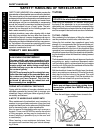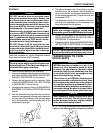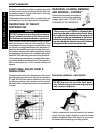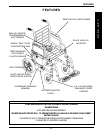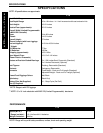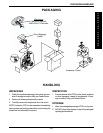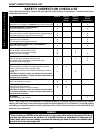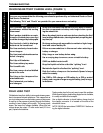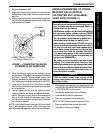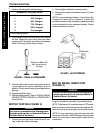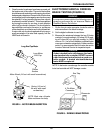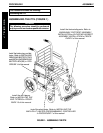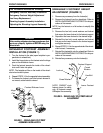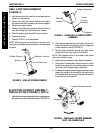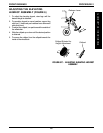
16
Read and understand this manual and any service informa-
tion that accompanies a battery and charger before operat-
ing the wheelchair.
Move the wheelchair to a work area before checking the fluid
level, adding distilled water, cleaning terminals, or opening bat-
tery box(es).
Recharge as frequently as possible to maintain a high charge
level and extend battery life.
Follow recommendations in this manual when selecting a
battery or charger.
Fully charge a new battery before using.
Use a carrying strap to remove, move or install a battery.
ONLY use distilled water to refill.
Keep the liquid level in the cells at the “split ring” level.
Maintain the liquid in all cells at the “split ring” level.
Push the battery clamps on the terminals. Spread clamps
wider if necessary.
Use ONLY a GEL charger or GEL setting for a GEL or sealed
battery and a regular charger or regular setting (wet) for regu-
lar batteries.
Don’t perform any installation or
maintenance without first reading
this manual.
Don’t perform installation or main-
tenance of batteries in an area that
could be damaged by battery spills.
Don’t make it a habit to discharge
batteries to the lowest level.
Don’t use randomly chosen batter-
ies or chargers.
Don’t put new batteries into service
before charging.
Don’t tip or tilt batteries.
Don’t use ordinary tap water.
Don’t overfill cells.
Don’t use uneven levels of distilled
water in the cells.
Don’t tap on the clamps and ter-
minals with tools.
Don’t mismatch your battery
and chargers.
TROUBLESHOOTING
FIELD LOAD TEST
Old batteries lose their ability to store and release power,
due to increased internal resistance. This means that as
you try to take power from the battery, some of that power
is used up in the process of passing through the battery,
resulting in less voltage at the posts. The more power
drawn, the lower the voltage available. When this lost
voltage drops the output 1.0 volts under load (2.0 for a
pair), replace the batteries.
Testing under load is the only way to spot this problem.
While special battery load testing equipment is available,
it is costly and difficult to transport.
Use a digital voltmeter to check battery charge level at
the charger connector. It is located on the side of the
wheelchair frame.
NOTE: READ the instructions CAREFULLY before us-
ing the digital voltmeter.
T
R
O
U
B
L
E
S
H
O
O
T
I
N
G
CHECKING BATTERY CHARGE LEVEL (FIGURE 1)
WARNING
Invacare recommends that the following procedures be performed by an Authorized Dealer or Quali-
fied Service Technician.
The following “Do’s” and “Don’ts” are provided for your convenience and safety.
DON’T DO



